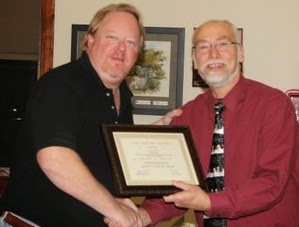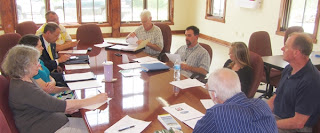Director Chris Turner and NCDOT's Secretary of Transportation Tony Tata. Aug 2, 2013
Originally published: 2013-08-08 14:11:12
Last modified: 2013-08-08 14:11:55
http://www2.wataugademocrat.com/Editorial/story/Our-View-And-the-wheels-on-the-bus-id-012193
Because we're all pleased that AppalCART replaces what would otherwise be about 1.6 million traffic-stifling vehicular trips each year, the solidification of the organization's new headquarters in Boone by way of a ribbon-cutting Aug. 2 is cause for celebration.
But there's more than a new building off the N.C. 105 Bypass to celebrate.
AppalCART began providing public transportation in 1981, and since that time the organization has never been solely about a building, buses and vans, and trip routes. Indeed, more important and critical to the success of this largely no-fare enterprise has been the partnerships which have allowed it to thrive.
From the diversity of its federal, state and local funding sources, to the host of statewide and community players which keep the wheels turning, that partnership was on fine display Aug. 2: Among those joining the event were representatives from N.C. Department of Transportation, the town of Boone, Watauga County and Appalachian State University.
By any account, that day was a long time in coming. A project first conceived in the form of renovation in 2000, it rightly morphed over time into a new construction project that would take -- including significant snags such as the departure of the original contractor only last year, forcing completion into the hands of the bonding company -- about four years.
But 13 years later, Watauga County is home to the crown jewel in the NCDOT's transportation system.
While there are unique aspects to Boone and Watauga County which help account for the achievement of this transportation model, it has worked also, albeit in more limited ways, in areas such as Chapel Hill, Carborro and Raleigh.
Based on these success stories, it is a model -- and partnership -- that at least bears scrutinizing throughout the rest of North Carolina where centralized vehicular congestion is a concern.

















































